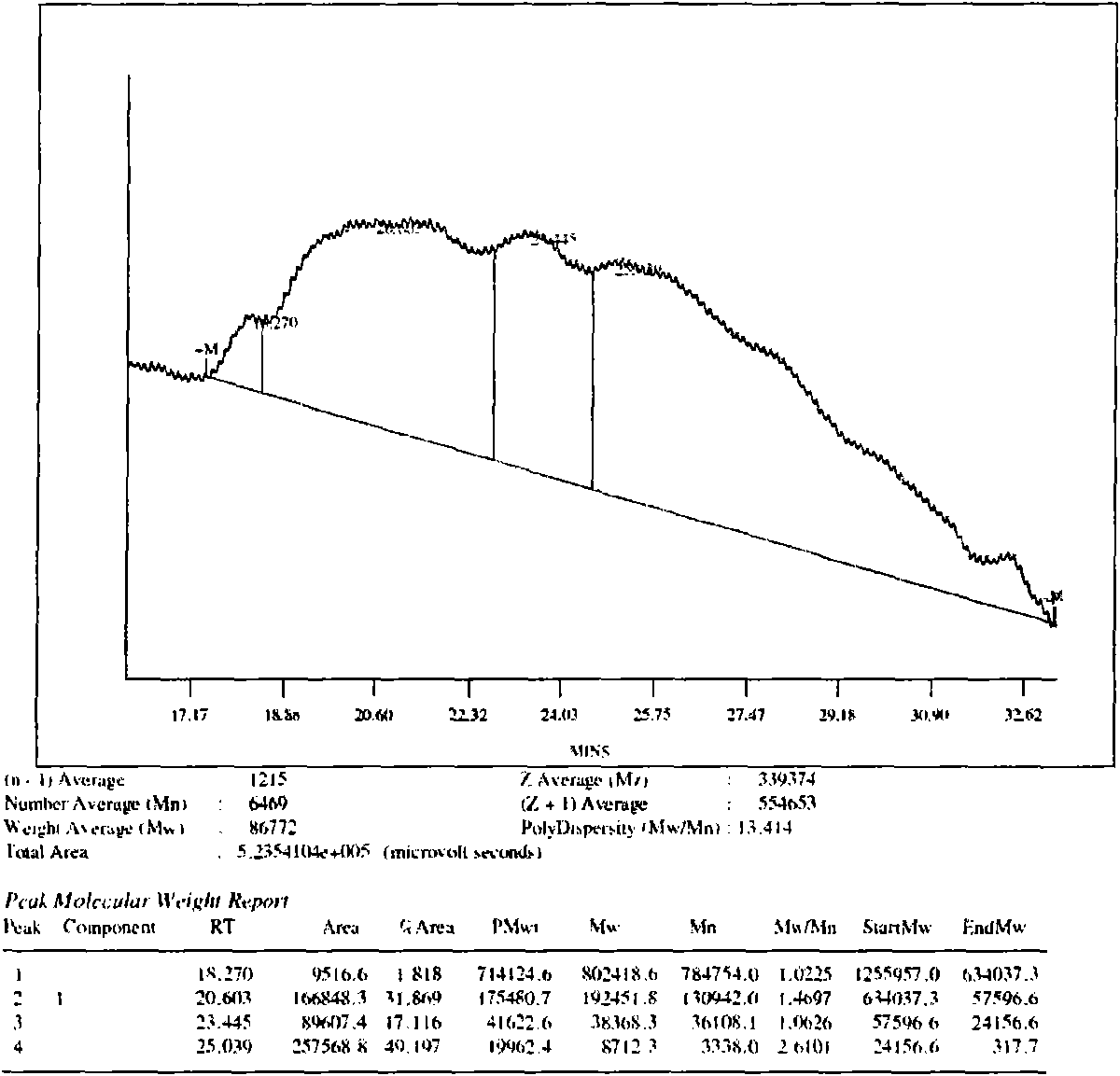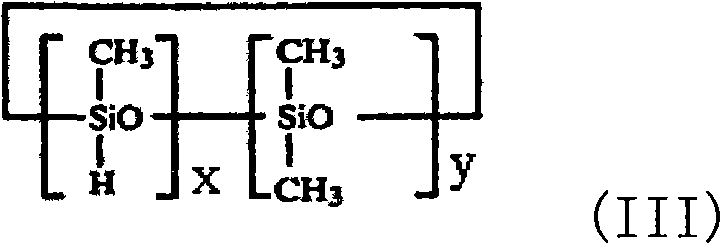Mould release agent, its preparation method and its purpose
A release agent and solvent technology, used in additives, petroleum industry, lubricating compositions, etc., can solve the problems of increased demand for release agent, increased pressure, increased volatile organic compounds, etc., and achieves less release agent transfer and storage. Stable, easy-to-apply effect
- Summary
- Abstract
- Description
- Claims
- Application Information
AI Technical Summary
Problems solved by technology
Method used
Image
Examples
preparation example Construction
[0043] The preparation of the polysiloxane with silicon-hydrogen bond is as follows: at least one silicone oil with silicon-hydrogen bond, at least one hydroxyl silicone resin and at least one dehydrogenation catalyst are dispersed in a solvent to form a dispersion, and the obtained The above dispersion is reacted, and then the solvent and catalyst are removed to obtain the desired polysiloxane having silicon-hydrogen bonds.
[0044] Wherein, the silicone oil with silicon-hydrogen bond includes the straight-chain silicone oil with silicon-hydrogen bond of the following formula (II),
[0045]
[0046] Wherein R is methyl or hydrogen, m>0, n≥0, the number of Si-H groups in each molecule is ≥3, and the hydrogen atom directly bonded to the silicon atom has a silicon-hydrogen bond relative to the The mass percentage of polysiloxane is 0.1-1.6%;
[0047] And / or the cyclic silicon-hydrogen bonded silicone oil comprising the following formula (III):
[0048]
[0049] Where x>0...
Embodiment 1
[0102] The formulation of the semi-permanent release agent is shown in Table 1.
[0103] According to the amount in Table 1, add polysiloxane with silicon-hydrogen bond to the dispersion tank with solvent, then add the catalyst under stirring at 100 rpm, and continue stirring at 100 rpm for 5 minutes at a temperature of 20°C , to obtain a semi-permanent release agent.
[0104] Table 1
[0105]
Embodiment 2
[0107] The formulation of the semi-permanent release agent is shown in Table 2.
[0108] According to the amount in Table 2, add the polysiloxane with silicon-hydrogen bond to the dispersing tank with solvent, then add the catalyst under stirring at 200 rpm, and continue stirring at 25°C for 6 minutes at the rotating speed of 200 rpm , to obtain a semi-permanent release agent.
[0109] Table 2
[0110]
PUM
 Login to View More
Login to View More Abstract
Description
Claims
Application Information
 Login to View More
Login to View More - R&D
- Intellectual Property
- Life Sciences
- Materials
- Tech Scout
- Unparalleled Data Quality
- Higher Quality Content
- 60% Fewer Hallucinations
Browse by: Latest US Patents, China's latest patents, Technical Efficacy Thesaurus, Application Domain, Technology Topic, Popular Technical Reports.
© 2025 PatSnap. All rights reserved.Legal|Privacy policy|Modern Slavery Act Transparency Statement|Sitemap|About US| Contact US: help@patsnap.com



